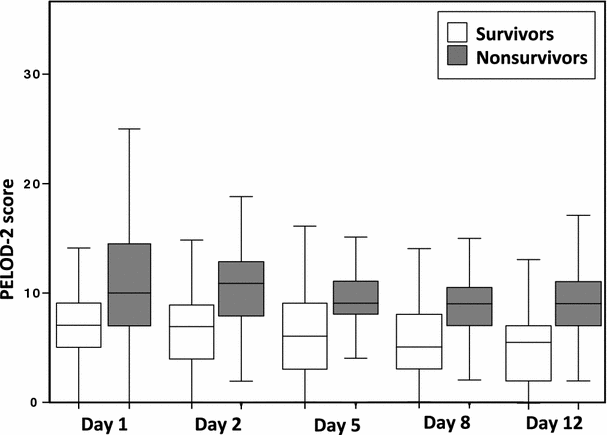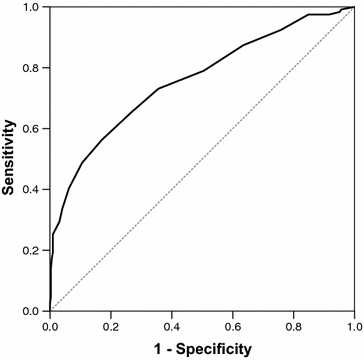Performance of the PEdiatric Logistic Organ Dysfunction-2 score in critically ill children requiring plasma transfusions
- PMID: 27714707
- PMCID: PMC5053948
- DOI: 10.1186/s13613-016-0197-6
Performance of the PEdiatric Logistic Organ Dysfunction-2 score in critically ill children requiring plasma transfusions
Abstract
Background: Organ dysfunction scores, based on physiological parameters, have been created to describe organ failure. In a general pediatric intensive care unit (PICU) population, the PEdiatric Logistic Organ Dysfunction-2 score (PELOD-2) score had both a good discrimination and calibration, allowing to describe the clinical outcome of critically ill children throughout their stay. This score is increasingly used in clinical trials in specific subpopulation. Our objective was to assess the performance of the PELOD-2 score in a subpopulation of critically ill children requiring plasma transfusions.
Methods: This was an ancillary study of a prospective observational study on plasma transfusions over a 6-week period, in 101 PICUs in 21 countries. All critically ill children who received at least one plasma transfusion during the observation period were included. PELOD-2 scores were measured on days 1, 2, 5, 8, and 12 after plasma transfusion. Performance of the score was assessed by the determination of the discrimination (area under the ROC curve: AUC) and the calibration (Hosmer-Lemeshow test).
Results: Four hundred and forty-three patients were enrolled in the study (median age and weight: 1 year and 9.1 kg, respectively). Observed mortality rate was 26.9 % (119/443). For PELOD-2 on day 1, the AUC was 0.76 (95 % CI 0.71-0.81) and the Hosmer-Lemeshow test was p = 0.76. The serial evaluation of the changes in the daily PELOD-2 scores from day 1 demonstrated a significant association with death, adjusted for the PELOD-2 score on day 1.
Conclusions: In a subpopulation of critically ill children requiring plasma transfusion, the PELOD-2 score has a lower but acceptable discrimination than in an entire population. This score should therefore be used cautiously in this specific subpopulation.
Keywords: Children; Critical care; Multiple organ failure; Outcome; Plasma transfusion; Score.
Figures


References
LinkOut - more resources
Full Text Sources
Other Literature Sources

